|
Are your words saying the same thing as your pictures?
One of the joys of living in a tiny TV market and watching local broadcast is having a good laugh at the expense of local advertisers. Granted, the advertisers may not see it that way. And yes, you may identify this unflattering indulgence as a case of schadenfreude. (Maybe that should be a Words Good Good Word Of The Week?) Schadenfreude, a delightful sounding German word for delighting in the pain of others is a morbid and mirthful time for everyone but the most conscientious and uncorrupt. But let’s face it: there are really only three good alternatives here. 1) Cry. 2) Stop watching. 3) Call the business and offer to fix their advertising. Since I‘m a cold-hearted human whose tear ducts have been paved over, crying is out. To stop watching would require initiative to do something else, and I’m inherently lazy. And being afflicted by a non-enterprising, introverted kind of lazy means I’m not reaching out to anybody I don’t have to. I’d rather gouge out my own eyes with grapefruit spoons. So, hello schadenfreude! Anyway, there’s a local funeral home that advertises on TV with some frequency. Their ad copy says what you expect: all the normal loads of caring, compassionate boilerplate. Most of the words talk about sincerity and sympathy and such. Then there’s the swimming pool and the alcohol. Yes, the image that is firmly cemented into my gray matter is the shot of the men in the family who run this caring and compassionate concern gathered around a poolside patio table with cold, frosty beer. Nothing in funeral service advertising speaks to caring and compassion like backyard swimming pools and cold beer. Now, shall I play devil’s advocate? The message sent by the cold, frosty beer is this: “If it matters to you, we are not Baptists.” And granted, there might be some method to that madness. If the receptionist at the funeral home is tired of answering every caller’s first question by saying, “Sorry, we are not Baptists,” that cold frosty beer by the pool is a good way to qualify the prospect before they ever pick up the phone. That insane bit of possible genius notwithstanding… As you know, when writing advertising, the single most important person in the message is the customer. In my humble if hyper-enthusiastic opinion, the best funeral advertising of all time is the Forest Lawn radio of years ago in Southern California. The campaign was called, I believe, “Celebrate A Life.” Each commercial was a monologue by someone fondly remembering a deceased friend or family member, and how incredible and joyous the sendoff was. I’ve never heard any advertisement that made me say, “Wow, I wish I could be that dead guy.” But this came close. (Talk about the opposite of schadenfreude!) Ya know what those Forest Lawn commercials never said? “And we chose Forest Lawn because the entire funeral home family likes to drink frosty cold beer around the backyard pool paid for by my funeral dollars.” Watch the words that are going with your pictures. Words and picture must complement each other. It doesn’t matter whether they’re on the screen or in your listener’s mind. The words might be good. But something in the equation might be bad. Unless, maybe, there’s a madness method afoot. Words good. Madness thoughtful? Cheers, Blaine Parker Your Lean, Mean Creative Director in Park City LIGHTNING BRANDING ON AMAZON The Kindle edition of our new book is now available at Amazon for the REDUCED bargain price of $9.95 For details about our new Lightning Branding courses, both do-it-yourself and we-do-it-with-you editions, click here. (There's even a video of us!)
0 Comments
Careful. Copy.
Words fail me. I don’t know what to say. So I’m just going to blurt it out. “Avoid diabetic amputations without surgery.” That is what the copy says. On a billboard. A giant billboard along an interstate highway. How did that headline get past everyone involved in a multi-thousand dollar media purchase? “Avoid life-changing disfigurement without cutting off your leg!” “Avoid doing without doing!” It’s so bad, it’s almost like a Zen koan. If a tree surgeon is amputating in the woods and no patient is there to be cut, does the limb make a sound? And what is the sound of one hand slapping the advertiser? Here’s the problem: there IS something important in the thinking behind the headline. But you wouldn’t know it from the inept wording. If you’re going to lose a foot or a leg to diabetes, you might already know there are surgical alternatives to amputation. There’s also a NON-surgical alternative to amputation. But to say, “Avoid doing by not doing” is a construct destined to fail because it spins the head around. How about, “No amputation AND no surgery!” That’s not great, but it’s better. “The non-surgical alternative to diabetic amputation.” That’s more clear, though not catchy. “Can a simple injection save you from diabetic amputation?” For the moment, that’s the headline I’m choosing. If I think more about it, maybe I can make it better. Backstory: I’ve been thinking about this on and off for a couple of months. I saw that billboard somewhere in Virginia about 10 weeks ago. It’s been nagging at me ever since. I tried googling the headline to no avail. Then, I thought about what the headline was really trying to say. If I’m avoiding without doing, what is it that I’m NOT doing? I finally searched for “surgical alternatives to amputation.” Lo and behold: there are surgical alternatives to diabetic amputation. They’re also often ineffective and problematic. Which is why some guy with a biomedical engineering background came up with an injection treatment as an alternative. That alternative treatment works better than surgery. It also helps avoid amputation. (Yes, I "researched" in all of three minutes. Peer reviewed by me!) Is that injection procedure what we’re selling here? I dunno. But it makes sense. Because it represents the right form of avoiding without doing. Is it possible the prospect will understand the original headline on the billboard? Yes. Is it more likely the prospect will be as confused as I was? Yes. When you’re driving past a billboard at 70 miles an hour and are told to avoid something without doing something else, you don’t have time to process that message and figure it out. It’s a complicated and unclear construction. A billboard needs words good and simple. Heck, not just billboards. Most written thoughts can benefit from good and simple. Gymnastics are not conducive to clarity. Clear up what you’re saying and you’ll sell more. Maybe an easier way to think of this is: your writing is entering into a conversation the prospect is already having. Speak to that prospect in words that sound like his or her conversation. All it takes is the time required to make it shorter, make it sweeter, and make it sing. Words good. And simple. Cheers, Blaine Parker Your Lean, Mean Creative Director in Park City LIGHTNING BRANDING ON AMAZON The Kindle edition of our new book is now available at Amazon for the REDUCED bargain price of $9.95 For details about our new Lightning Branding courses, both do-it-yourself and we-do-it-with-you editions, click here. (There's even a video of us!) Unleash The Snark!
How shall I phrase this? I’ve been to the mountaintop? Mmmm… no. It was Minnesota. No mountains. Have I been to the Promised Land? It’s Minnesota. Some may see it that way. But I think I may just have to fall back onto a well-used Hollywood cliché… I’ve been to see the wizard. In this case, the wizard is a St. Paul-based poet entrepreneur (poetpreneur?) with an extraordinary track record in business of telling people things they don’t want to hear. That man is Dan Hill. A former academic with a Master’s Degree in Creative Writing/Poetry, and a PhD in English, Dan Hill is the world-renowned master of facial coding, which he performs with his company Sensory Logic. What is facial coding? Let’s call it measuring human emotions through facial expressions in order to understand people’s reactions to various input. (That input can include advertising, even radio commercials.) Dan’s system for judging human emotional reactions through facial cues has put all kinds of businesses on his client list at Sensory Logic. That includes more than 100 of the world’s top 100 advertisers. His groundbreaking book, Emotionomics, has been an Advertising Age Top 100 must-read book for the year, and has been translated into a dozen or so languages. Dan Hill is a certified smart guy. So why is he seeing me? Hello, shameless self promotion! Dan and I were introduced by the great Jerry Lee, legendary radio station owner, President of SpotQ Services (for which I’ve done some consulting), crime prevention philanthropist, and all-around extraordinary human being. (Jerry Lee was knighted by the King of Sweden. I mean…how did I end up in such illustrious company?) Dan was writing a book and was looking for contributors. He talked to Jerry Lee, and yours truly somehow ended up on the shortlist. That’s how your relentless scribe became a contributor to Dan’s first satirical business book. It’s called Blah, Blah, Blah: A Snarky Guide To Office Lingo. This book is created in the vein of so many classic works, ranging from Henry Beard’s The Sailor’s Dictionary (a personal fave) to The Devil’s Dictionary by Ambrose Bierce (deemed one of The 100 Greatest Masterpieces of American Literature, and Dan’s inspiration for this volume). Blah, Blah, Blah is funny, it’s biting, and it’s something unexpected. It’s a public service. The idea for Blah, Blah, Blah developed when Dan was having conversations with important business types who each told him, separately, that about 25% of corporate managers are bullies. This idea seems reflected in the book’s dedication: “This book is dedicated 100% to the wonderful people we’ve known on the job, and 10% to treacherous people who made writing this book so cathartic.” Dan told me he thought of turning to satire as an effort to encourage reforms in the workplace. The resulting book is funny enough that it has received genuine, out-loud laughter from The Fabulous Honey Parker. (If you know anything about comedians and comedy writers—both groups to which Honey belongs—getting them to laugh at all is a project. They’re always analyzing the jokes, and they’ve heard more jokes, good and bad, than normal, healthy people.) Here now, a few Blah, Blah, Blah definitions that passed the Honey Test… TALENT: The assumption that corporate life reaches Hollywood standards, when it’s really more like Vaudeville. ANTICIPATION: The naïveté that precedes Anticipointment. THOUGHT LEADER: A person who possesses neither any original thought nor the propensity to lead. SEXUAL INNUENDOS AND HARASSMENT: While innuendos involve pointless body-part references that belong in a bedroom, not a conference room, harassment may become the catalyst for mandatory training whereby (some) male employees learn that “harass” isn’t actually two separate words. BORDERLINE DECISIONS: What leaders with borderline personalities do best. I confess, that latter definition is mine. Accordingly, I’m honored to have moved the needle on The Fabulous Honey Parker’s Laugh-O-Meter. Anyway, all this to say, Dan’s business is fascinating. And his new book is funny. Feel free to buy it here. If you read this as text only or your links are disabled, copy and paste https://www.amazon.com/Blah-Snarky-Guide-Office-Lingo-ebook/dp/B09BWPQGGJ It’s available in Kindle and Paperback. I have both. I recommend paperback for the full and fun, book-like effect. And I get paid not one thin dime for any of this. No fat dimes, either. For me, as a writer who has had to battle corporate jargon in daily life, it’s just about knowing that this effort at sanity and public service is out there, chipping away at the deeply ensconced criminality of intellectually illicit institutionalized lingo. Also, when you read Dan’s preface, you’ll find a link to bonus material. So there ya go. No hard sell on this one. It’s just good work by a good man whom I admire, and I’m honored to have been part of it. (Thanks for the referral, Jerry Lee. And thank you loyal reader Rod Schwartz of Radio Sales Café for the invaluable introduction to Jerry Lee.) Cheers, Blaine Parker Your Lean, Mean Creative Director in Park City LIGHTNING BRANDING ON AMAZON The Kindle edition of our new book is now available at Amazon for the REDUCED bargain price of $9.95 For details about our new Lightning Branding courses, both do-it-yourself and we-do-it-with-you editions, click here. (There's even a video of us!) IT'S DARK. IT'S RAINING.
We’re about to drive 700 miles from coastal Mississippi to central Texas. We are 100 yards into the journey--and have stopped dead. Clanging bells. Flashing red lights. The gates at the rail crossing have descended. The windshield wipers are swiping away. Ker-thunk. Ker-thunk. Ker-thunk. Did I mention that the middle of our route features a tropical depression? We sit there in the dark, watching an immense freight train crawl past. Amid the rumble and the rattle, I’m looking at the markings on the cars. I’ve certainly seen freights before. But I’ve never thought much about the markings on the car. Here now, at railbed level in the dark, I’m looking my headlights shining on the sides of the cars. Each passing car has a four-letter code stenciled in the lower left-hand corner. It’s clearly an identifier of some kind. SHPX RTDX SCYX TLDX There’s so much similarity in the string of cars, and the stenciled codes all have identical "art direction." But there’s one code that stands out from all the others. Ready? UTLX You can see the difference, can’t you? Ha! There is little difference in the four-letter code itself. But right underneath it in simple, block type, it says: “THE TANKCAR PEOPLE.” More faceless codes stream by, followed by another string of “UTLX/THE TANKCAR PEOPLE.” More cars and more codes. Then, several more “UTLX/THE TANKCAR PEOPLE.” I’m fascinated by the detail. Hundred of cars, hundreds of thousands of tons of metal, hundreds of iterations of codes… But only one code that has people involved. And clearly people are involved. This required thought and effort. And now, I’m involved. What are these codes? And who are the tankcar people? Get ready for your rail history lesson of the day. The code is called a “reporting mark.” It identifies the owner or lessee of a piece of “rolling stock” used on a rail network. The code reflects the name of the owner. And all this makes me think of a phrase often used by a late, great radio guru. When talking about why railroads failed when facing competition from airlines, he liked to say: “They thought they were in the railroad business. The didn’t realize they were in the people business.” Of course, he was talking about transporting people and not freight, but you get the gist. So, who is the owner of UTLX? Who are the tankcar people, who clearly know that despite transporting fluids, they’re serving people? Meet the company born in Chicago in 1866 as Union Tank Car Company. The company was established as a challenge to one of the nation’s greatest controversial business figures, John D. Rockefeller. It was also quickly acquired by John D. Rockefeller. In the late 20th Century, the company was acquired by the Marmon Group. In the early 21st century, Marmon Group was acquired by Berkshire Hathaway. (Are we surprised?) Today, UTLX is the largest manufacturer, lessor and maintainer of railcars in North America. It must be true. It’s on their website, which is quite good. It's far more engaging than one might expect from a website about a rail car business. But what’s most interesting about the great and ugly, ironclad products and sprawling corporateness of the ownership of this century and a half old company? It’s about the people. It’s an innocuous little three-word tagline. It has very little “creativity” involved, but is involving on a level that matters. Because down on the ground amid a vast and sprawling sea of anonymity, UTLX pops through and makes a simple statement. In railyards across North America, there are working people who are being reminded that UTLX are the tankcar people. Thousands of UTLX employees, and hundreds of thousands of railroad workers know who the tankcar people are. Even a guy sitting at a railroad crossing in the dark and the rain has some idea about UTLX. UTLX is the code, and the code is about people. Words good. People important. Cheers, Blaine Parker Your Lean, Mean Creative Director in Park City LIGHTNING BRANDING ON AMAZON The Kindle edition of our new book is now available at Amazon for the bargain price of $19.95 For details about our new Lightning Branding courses, both do-it-yourself and we-do-it-with-you editions, click here. (There's even a video of us!) CREATIVE THINKING THAT INSPIRES, SURPRISES, DELIGHTS, AND DELIVERS A DESIRED RESULT.
At its best, that is what good writing is. Opinion? Perhaps. But it’s one of the reasons why advertising copywriting is so much fun. You get to weaponize words on behalf of your client, often blowing up the client’s bottom line in ways that are not possible using other means. But it’s not just about getting the words on paper. It’s about everything leading up to that. And sometimes, there are no words on paper at all. That’s why the peaceful screed colors outside the lines. It’s not just about writing the words. It’s about taking actions that inspire, and being inspired to take action that fuels words. It’s a productive cycle of energetic genesis. Good writing is good thinking. Good thinking makes things happen. Which is why we’re about to talk about a dive bar. (Yes, it’s a left turn. Go with it.) The Fabulous Honey Parker and I have many hobbies. One of them is dive bars. Dive bars are fun, in part because they’re often a place full of surprises and unusual people. Yes, sometimes there might be that loud, drunk woman with a voice like the angry laughter of an enraged crow perched on barbed wire, screeching and cawing about the ball game on the TV. You might also meet the retired schoolteacher who’s a millionaire real estate entrepreneur with a portfolio of local residential rental properties (and a much nicer laugh than the crow lady). You might meet a local criminal attorney who’s still wearing his suit from court that afternoon. Or the software engineer, sitting with his phone out, reviewing updates to a program under development. These people are there, and none of them know your name. Yet. Right now, they’re on the Mississippi Gulf Coast in a little dive bar with a fishing theme. Fishing happens around here. Dive bars, though? Not as often as they used to. It’s an artsy little town that has undergone a degree of gentrification. As one old-timer local told me, he’s just about the last of his friends who lives here. The place has become too fancy. Nonetheless, some of the dive bars persevere. They are dimly lit places with dark wood furnishings, out-of-state license plates on the walls, dollar bills tacked to the ceiling, and various surprises hidden throughout the (ahem) decorating. This Mississippi dive bar is different. Yes, it’s filled with local characters. But it’s also nationally recognized. It is lauded as one of the nation’s best dive bars. And it happens to be a pandemic survival story. Hello, pivot! One of the big selling features of this bar is they have an excellent low-country boil. If you’re not familiar with low-country boil, it’s some form of seafood (usually crawfish, shrimp or crab, or a combination thereof). The seafood is boiled in abundant spices along with sausage, corn and potatoes. That’s the traditional lineup. My personal boil recipe includes a rotating cast of green veggies to help dispel one’s overriding sensation of guilt that comes from scarfing down potatoes and corn alongside crusty bread, all with no greens. A boil is often dumped out onto a communal table and consumed with one’s hands. Beer is often in evidence. A good low-country boil makes people’s heads explode. And during pandemic lockdown, there was no boil happening inside this bar because nobody was allowed inside this bar. So the owner decided to give people something he felt they needed: a way to get boil takeout. Despite no formal drive-thru architecture (it’s a dumpy old stucco building covered in banners and beer signs), this man turned his bar into a drive-thru boil emporium. The inside of the bar was filled with boil pots, takeout containers and crawfish. A new banner outside proclaimed “Crawfish boil drive thru!” And people drove through, driving away with boiled low-country comestibles. This man’s revenue also went through the roof. And no, he’s not a writer. He owns a bar. He did write a simple sign advertising his product. He also wrote some simple, fun Facebook posts showing his promise of masked-up drive-thru boil. They featured a giant photo of a crawfish waving his claws, saying “You want some of this?!” And it was good. And profitable. Good writing is good thinking. Good thinking makes things happen. It’s thinking beyond the page. Good writers are often cogitating on the world, and how to put thoughts into action. Sometimes, that action is a pen across the page. Sometimes, it’s realizing how to best serve the customer. And sometimes, it’s just going into a strange new dive bar somewhere and seeing how other people reinvent their world, one dimly-lit, laughter-filled encounter at a time. Cheers, Blaine Parker Your Lean, Mean Creative Director in Park City LIGHTNING BRANDING ON AMAZON The Kindle edition of our new book is now available at Amazon for the bargain price of $19.95 For details about our new Lightning Branding courses, both do-it-yourself and we-do-it-with-you editions, click here. (There's even a video of us!) OBVIOUSLY, THIS IS A DUMB MISTAKE
Write with more impact! More punch! More zip and zest! More verve! But, how? What magic must there be in making words sizzle on the page, and perhaps leap from an announcer’s lips as if frantic newts scampering away from a hot griddle of garter snakes? Obviously, you have no idea. But one of the first, obvious things to do is stop using a word like, “Obviously.” Want to see? Look at how much punch is in this one line after removing the adverb: You have no idea. That word is obviously standing between your idea and your reader. We’re going to call that word a “crutch word.” It’s one of those words that we lean on every day because it’s there and it’s easy and we got used to it when we were small children. Another word we got used to as even smaller children was, “Goo.” As in, “Goo goo.” We stopped saying that one. Is it not time we stopped goo’ing up the works using words that don’t move things along? Should we not stop allowing our words to slump and slumber? Shouldn’t we stop dragging our fat sentences across the page like lead-filled plaster casts of broken body parts? Instead, why aren’t we vaulting into the air on vital, rippling musculatures of verbal lean? And is that preceding paragraph awful? Yes! But you’ve read this far. Why? Two reasons. One, there’s an initial promise of something better and more profitable. Two, that paragraph was not expected. It’s fast. It flies. It surprises. And it doesn’t do that by leaning on crutch words like, “Obviously.” As has been established in previous episodes of this missive, one must write fast—even if it means committing grammatical transgressions like “fast,” which ought to correctly be an adverb like quickly or (less correctly) “fastly.” (Good grammar is optional if the impact is more important.) Write! Write as quick as silver streaks across a red hot skillet. Whatever that means. It sounds fast. Then, after writing, one must edit. Edit it. Ed-it. Edit. Let’s say you’re writing a 60-second radio script. That needs to be about 150 words of comin’ out swingin’. It might be swingin’ like a punch-drunk fighter in what will be an unfortunate face-down situation on the canvas. Or it might be swingin’ like a big band in front of a floor full of hep cats cuttin’ a rug to all that jazz, daddio. Or it might be swinging like an old tire at the end of a knotted rope tied to the branch of a grandaddy oak tree on a steamy summer day where the only respite from the swelter is in the shade of that green, leafy canopy while mom makes an icy pitcher of lemonade and a lazy banjo plinks away in the background. Three different ways to swing. But not one of them says, “Obviously, you want to swing.” Or, none of them says that right now, that is. Earlier, a crutch word may have been in there, back when your relentless scribe was in a speed-writing brain dump onto the page in an effort to puke up anything that might make sense here. After the dumpage, I went back and used my pen like a surgeon’s scalpel, slicing away the fat and bother. If you want more punch in your prose, you can’t saddle it upon the threadbare horse blanket of words that don’t spur it into action. What words are they? We’re talking about words like, “Obviously,” “Actually,” “Basically,” “Literally,” (which is literally almost never used properly), “So,” “Well,” “Look,” “Awesome,” (almost always never true), “Seriously,” “Totally,” “Essentially,” “Really,” “Just,” “Right,” and “Very.” Oh, and let’s not forget that super-annoying crutch word of the 21st century... “Super.” AUUGGHH! There, I said it. Super awesome or what? Write your brain-dump blather draft. Then, make it make more sense. After that, go through it again and ask yourself about every single word, “Do I need this?” You will often find yourself loaded up on crutch words standing in the way of actual impact, magnitude, swagger or sizzle. Cutting out such words helps your other words talk smack. And while you’re at it, be certain to kill, kill, kill your darlings. There will always be some kind of cuteness in there, all fuzzy and fun and rolling around right in the way of getting things done. And you adore it. Crush it! Squash it like a bug! Execute it with extreme prejudice! What exactly is a darling and how doth one spot it? Good question for another time. I have already overstayed my welcome. Words good. Edits better. Cheers, Blaine Parker Your Lean, Mean Creative Director in Park City LIGHTNING BRANDING ON AMAZON The Kindle edition of our new book is now available at Amazon for the bargain price of $19.95 BUT ON SALE RIGHT THIS MINUTE FOR 3.99! For details about our new Lightning Branding courses, both do-it-yourself and we-do-it-with-you editions, click here. (There's even a video of us!) WORDS GOOD! BANG BAD?
Screamer. Startler. Gasper. Shriek. Pling. Bang. There is a single, potent mark that goes by many names like these. Are you inserting that mark into your writing as a tool of emphasis? And if so, are you plinging yourself in the eye, screaming at your reader, startling your message off the page, gasping with every word, eventually shrieking into the void, and banging yourself into oblivion? Each of the aforementioned words (pling, et al) is a synonym for what is one of the most declarative and most overused pieces of punctuation in contemporary English: the “!”. It is also known as the exclamation mark or exclamation point. Granted, this is probably not be about you and your writing. But guaranteed, you know such a writer. You? You are more likely a victim of this punctuational assault on the senses. And it can help to know a little about the weaponry of one’s adversaries in an effort to disarm them. One great place to start is with the great F. Scott Fitzgerald, contender for Great American Novelist status as author of The Great Gatsby. Fitzgerald was mentoring Hollywood journalist Sheila Graham, who had literary aspirations. She asked Fitzgerald to look at something she had written. According to Ms. Graham, Fitzgerald read the piece, edited it, and told her… “Cut out all these exclamation points. An exclamation point is like laughing at your own joke.” In other words: Ah-ha! Ah-ha-ha-ha! Ah-ha-ha-ha--ha-ha-ha! HA! HA!! Nobody needs that. The person who needs it least is the joke teller. When you tell a joke that way, you lose the telling and become the joke. And the comedy is not pretty. That said, the exclamation point has a colorful history. Really! It has been places and seen things. It may have originated in Latin, evolving from “io,” which was an exclamation of joy. Medieval copyists would write “io” at the end of a sentence to express joy. Gradually, the “i" was moved on top of the “o”. And eventually, the “o” evolved to a dot, and the rest is history! It’s possible that you’ve used an old manual typewriter that has no exclamation point key. Instead, you were required to type an apostrophe, backspace and type a period. (That should give you some idea about how frequently one was intended to use the mark.) Back in the day, secretaries and proofreaders called the mark by perhaps the most glorious of its many names. And that name was, “Bang.” Why bang? The fun option is that it’s a reference to comic-book style, where a gunshot is indicated by “!”. Computer hacker slang has borrowed the “bang” descriptor, and also uses the words “shriek” and “pling” to indicate “!”. And yes, “!” has become a fixture in social media and in texting. But I’ve even seen it used to excess in BUSINESS EMAIL!!!!! HOLY COW!!!!!!! Let’s revisit the word “pling” for a moment. It’s a lovely word. It sounds like the barest tap of a tiny hammer on fine crystal. That sound, used once, can be pleasing. Less pleasing is when that tack hammer BANGS that crystal over and over until there is breakage and crashage and a gigantic mess of epic proportions. Yes, from joyful to junk with just a few keystrokes. When used with relentless abandon, the exclamation point stops being a mark and becomes the message. The message is, “I have nothing to say. Words escape me. But I possess a giant bag of hammers and I will use them all right here and now.” The “!” is a single kiss. But some writers are sucking face in the backseat with their date and nobody needs to see that. The problem of the “!” is a problem of emotion. A writer might have powerful feelings, but mistakes the mark for conveying those feelings with power. Not so. Excessive use of the mark is thrashing about in a cage, the emotion imprisoned by a lack of verbal control and command. Replacing the mark with potent wording is far superior in conveying meaning. Let’s express this as succinctly as a tweet, shall we? “I hate exclamation points!!!! They suck!!!! Stop doing it!!!!!!!” OK. But what about… “Every time you use the mark, it’s a dagger thrust into the heart of your reader. Each exclamation point kills your message, your reader and you just a little bit more.” Each of those thoughts will fit Twitter. But one of these things is not like the other. THE FIRST ONE IS SCREAMING ABOUT ME!!!! The second one is about someone more important, and the injury being done to them. Persuasion does not come at the end of a bang! Persuasion doesn’t scream, shriek or pling. Persuasion comes at the end of phrasing that matters. Try turning the scream into a whisper. It’s easier to hear. Cheers, Blaine Parker Your Lean, Mean Creative Director in Park City LIGHTNING BRANDING ON AMAZON The Kindle edition of our new book is now available at Amazon for the bargain price of $19.95. For details about our new Lightning Branding courses, both do-it-yourself and we-do-it-with-you editions, click here. (There's even a video of us!) DON’T BALTER ABOUT, YOUR BEER-SOAKED BABOON!
Yes, today’s Good Word is “balter.” The word "balter” means to dance artlessly, without grace or skill. In other words, it's dancing like a lot of geeky guys do at their junior prom. It might even be how we dance in this missive. Words Good does not claim to bring any particular art to you or your writing. But it does bring a great degree of clumsy enthusiasm. And occasionally, it offers up a fun word without any clear need for that word. However, with a word like “balter,” is "need" really the issue? Balter is about the fun, the thrills, the joy of lex. Words? Good! Balter? Better! As great as they are, you can’t run around plugging big, unusual words like “brobdingnagian” into your everyday conversation. But a word like “balter” can find a home in your daily chatter. Let’s say your friend Walter gets drunk and tries to dance yet again. You can call him Baltering Walter. Perhaps he was even that beer-soaked, baltering baboon at the top of the page. “Balter” is a good enough word that you could even start a whole movement about it. You might start printing and selling T-shirts that proudly proclaim, “Balter on!” and it becomes a thing. As an alternative to the annual spring debutante ball, where fresh young flowers are introduced to society, you’ll begin seeing that annual satirical rite, The Annual Autumn Balter Ball, where besotted balterers celebrate the death of the season among the brown, crunchy leaves of another wasted summer. And just by the way, speaking of trees… Whilst researching “balter” for your dining and dancing pleasure, Google informed me that “People also ask, ‘What is a Dendrophile?’” I had to ask, too. It sounds like something the cops might be able to run a sting for. "Let's nail those disgusting dendrophiles, damn it!" Indeed, knowing something about the word “dendrites” did not inform any further understanding of dendrophilia, which sounds just a little bit dirty. Seems a “dendrophile” is a tree lover. So very quickly, while baltering about with Google, your artless scribe succumbed to the juvenile joys of fabulous phonemes with no regard for usefulness or practicality. Not that there’s anything wrong with that. Anyway, Words Good Good Word for Daily Use is “balter,” to dance artlessly, without grace or skill. Bet you can find a place for it. Cheers, Blaine Parker Your Lean, Mean Creative Director in Park City LIGHTNING BRANDING ON AMAZON The Kindle edition of our new book is now available at Amazon for the bargain price of $19.95. For details about our new Lightning Branding courses, both do-it-yourself and we-do-it-with-you editions, click here. (There's even a video of us!) THE BLANK PAGE IS AN IDIOT.
It will not do as you tell it. If you try asking nicely, it just scoffs. You can try threats. “Hey, paper boy! There’s open flame over here. I have matches, a lighter, even a gas cooktop. I can toss you in and watch you go up in flames and smoke like some kind of inhuman sacrifice to the saints in a witch trial by writers who hate the blankness of your pagery!” Guaranteed: the page will merely look back at you, blankly. It has the upper hand and it knows. “Say something!”, you yell. Nothing. If only you could find the fight that makes this passive ass cooperate in a way that lets you both get on with it and move on to bigger, more profitable problems. This vignette brought to you by Everything Is Nice. But it’s better when it’s not. Do you want to make your writing more interesting? Immediately? Throw it against the wall. Stomp on it. Yell at it. And let it fight back. One reason why so much writing is so flat is that there is so no conflict. People (thankfully) try to avoid conflict in daily life. But one place to embrace the fight is on the blank page. And it doesn’t even need to be the good fight, It can be the nastiest, pettiest, most mean-spirited little spat you ever had. Have a tug of war. Have a battle of wits. Recount a witlessness in which you’re forced to participate. Pine for someone you love who hates you back. Recount the tale about how you use your Jedi lightsaber in heavy traffic against New Jersey drivers. (If you’re from New Jersey, no apologies. Your drivers are offensive zipnods.) Write about the time you were banging heads with someone and it led to blood and stitches. Write about a fistfight and how it feels--especially if you’ve never had one. Fight with sleep and let sleep lose. Writing an advertisement? Describe the deep-seated hatred you feel for the advertiser’s product. When the blank page is mocking you, turn it around. Mock the page back. Show it who’s boss, especially if you feel you’re not. Fake it. Bring the fight and turn the page’s mockery into full cooperation. The blank page is a bully, and a weakling at that. Don’t fight the page. Fight ON the page. Be strong and it will bend to your will. And write more than you need to. It will share the abundance of gems you never knew you had at hand. Cheers, Blaine Parker Your Lean, Mean Creative Director in Park City LIGHTNING BRANDING ON AMAZON The Kindle edition of our new book is now available at Amazon for the bargain price of $19.95. For details about our new Lightning Branding courses, both do-it-yourself and we-do-it-with-you editions, click here. (There's even a video of us!) The client’s missive popped into my mailbox.
I was concerned. Had the script done what was needed? And was he happy? Not just happy enough, mind you. Was it no-exceptions happy? He’d know the difference between good and great. This is a man whose entire life has been big radio. Did my writing render the result he required? Click. Read. “I love the script.” Phew. That reaction made the hours sweating over a dozen details of 167 words all worthwhile. For days, the script had been 97% good. The last 3% was being a beast. You keep struggling with it. Pushing it. Kicking the thing. And resisting a change to something you know, deep in your heart, is wrong. A key word in the copy was “Neuroscience.” Thematically, this word is the lynchpin for his message about human behavior. But the two beasty words were: “In action.” In an effort to emphasize the point that neuroscience is the hero, I had trotted out the phrase “Neuroscience in action.” Over several days and twice as many tweaked drafts, that phrase began poking at me. It was not a glaring, “LOOK AT ME!” darling. Nor was it an error of great and grievous proportions. But every time I tried to cut it loose, my head kept second-guessing me. “We need it there. It brings action. Literally!” The tactical writer inside me kept rationalizing it. Then, the executioner inside me said, “This must end. Kill it now.” With a single swing of the ax, those two words rolled away, forever separated from neuroscience. The prepositional phrase that had been pestering me evaporated with a keystroke. “Neuroscience” suddenly stood up its hind legs. It now had gravity. It brought the force of its own four syllables to poke at the listener’s gray matter and make the connection. It was now putting the “awe” in authority. (Did I really just write that? Eegad.) Anyway, here’s the point for you, the writer who must create compelling copy… Finding the right word and the right phrasing matters. It takes time and doesn’t always leap forth from the keyboard as if yet another verbal Athena from the head of a thesaurical Zeus. Writing well a process. We can do things to accelerate that process. But sometimes, we let ourselves stay stuck. This is why good writing is rewriting. Solid copy needs the opportunity to solidify. What seems like cured concrete today can jiggle like unset gelatin tomorrow. As important as it is to listen to the words, it’s also important to listen to one's writerly superego. It will say things like, “Is that really right?” Or, “Should that maybe go?” Or, “Perhaps we should see how it sounds without that one thorny little oyster of a phrase. “Maybe the pearl is already out of the shell.” Whack! And, voila! It worked. All of sudden, it was 3% better. In the aftermath, I was pondering the process of finding just the right word. So I asked Prof. Google. I typed in, “Just the right…” And the professor finished the phrase for me. “Word.” I was looking to see if there’s any scholarly insight into the kind of wrestling that happens in making the page right, or if I’m just a hardy fool. Or both. I stumbled upon a quote from that old, often cancelled rich white guy of immense ego and equally immense support for the common man, the underdog and the worker bee. Mark Twain said, “The difference between the almost-right word and the right word is the difference between the lightning bug and the lightning.” Mic drop, Mr. Twain. Thank you. Cheers, Blaine Parker Your Lean, Mean Creative Director in Park City LIGHTNING BRANDING ON AMAZON The Kindle edition of our new book is now available at Amazon for the bargain price of $19.95. For details about our new Lightning Branding courses, both do-it-yourself and we-do-it-with-you editions, click here. (There's even a video of us!) |
AuthorBlaine Parker is prone to ranting about any and all things related to brand. In many ways, he is a professional curmudgeon. While there is no known vaccine for this, the condition is also not contagious. Unless you choose it to be so. Archives
February 2022
Categories
All
|
|
© Copyright 2020 Slow Burn Marketing LLC |
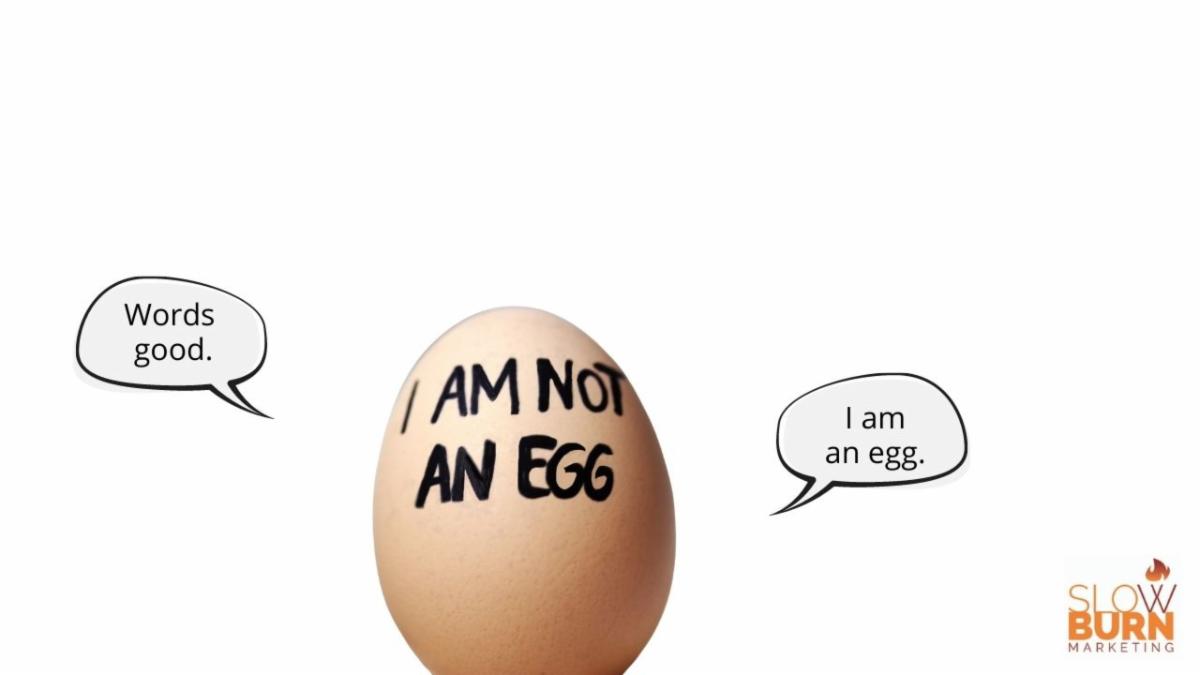
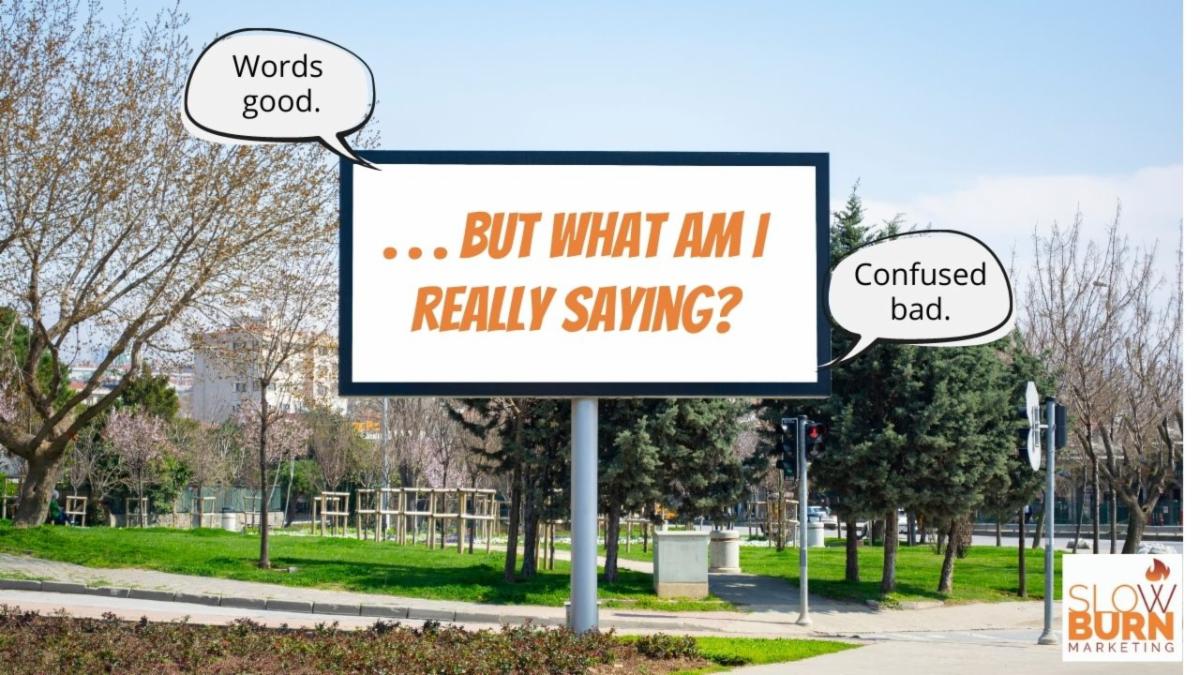
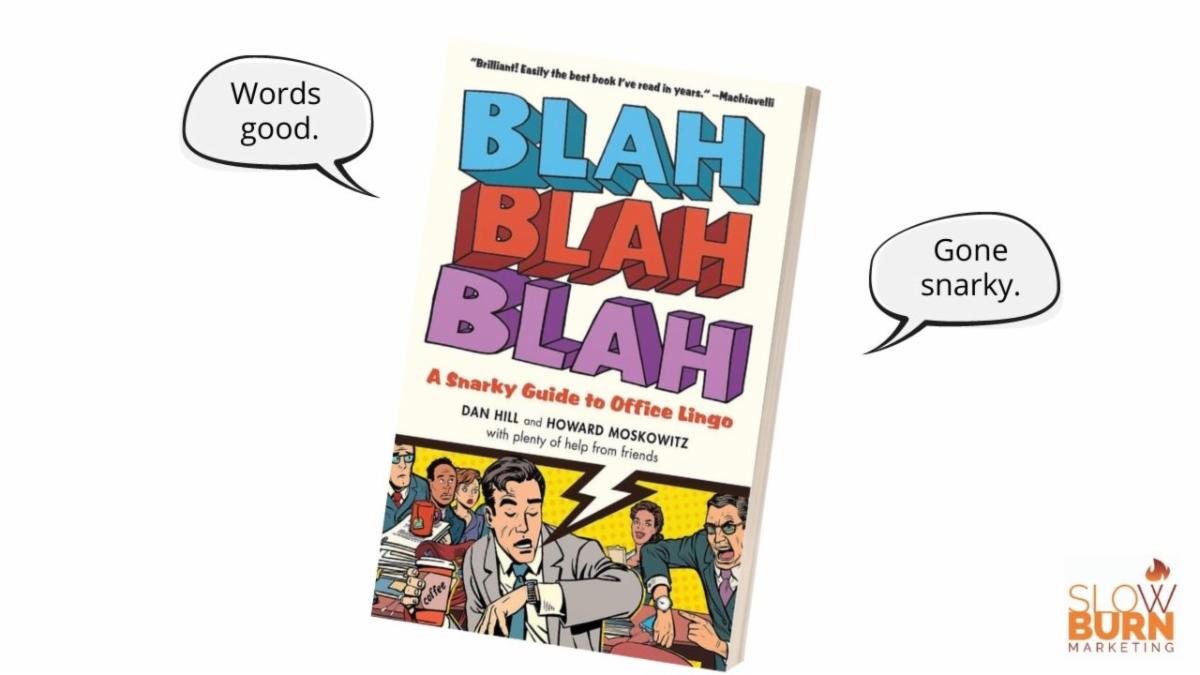
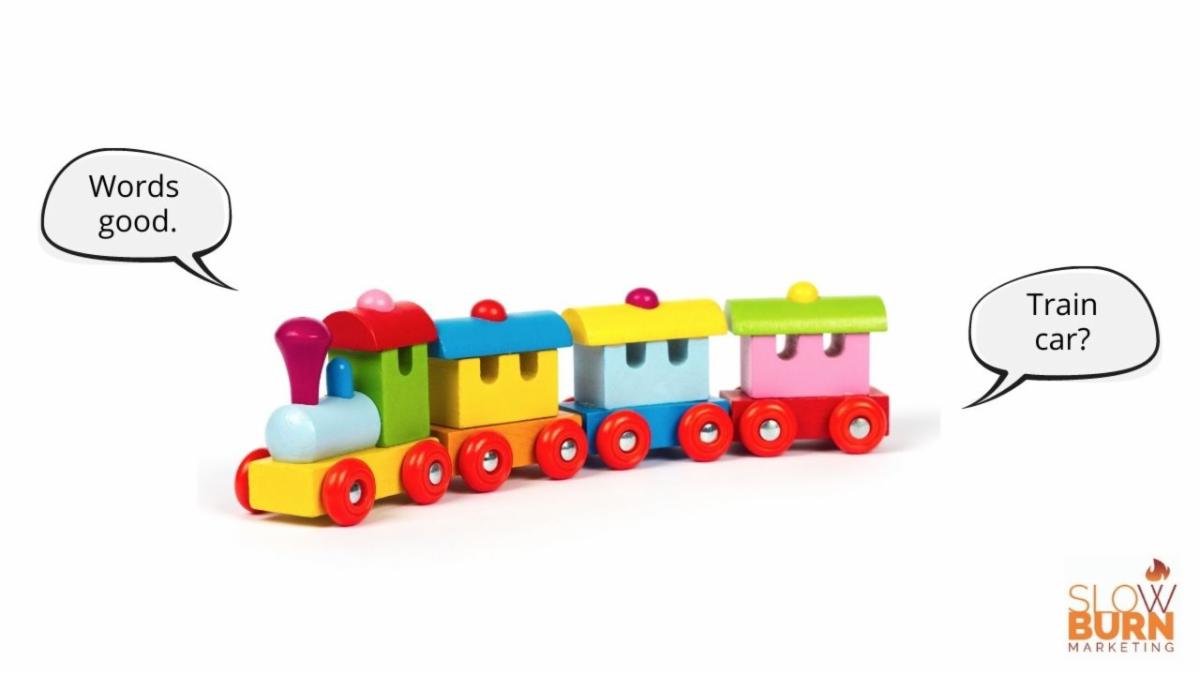
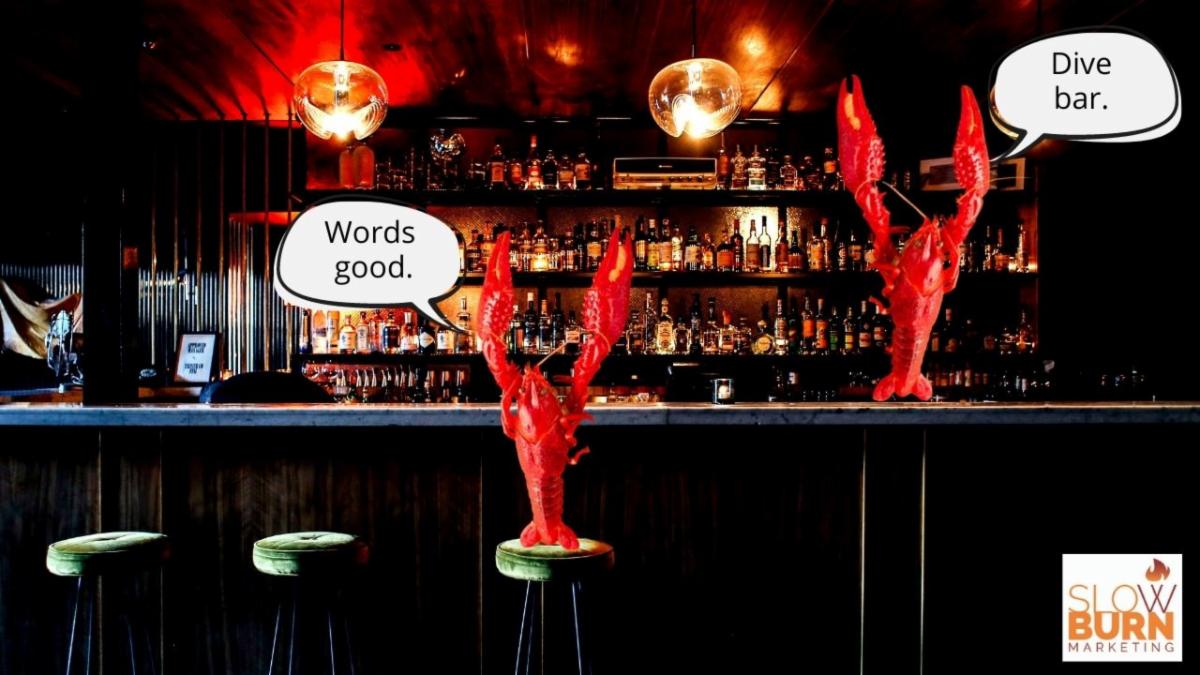
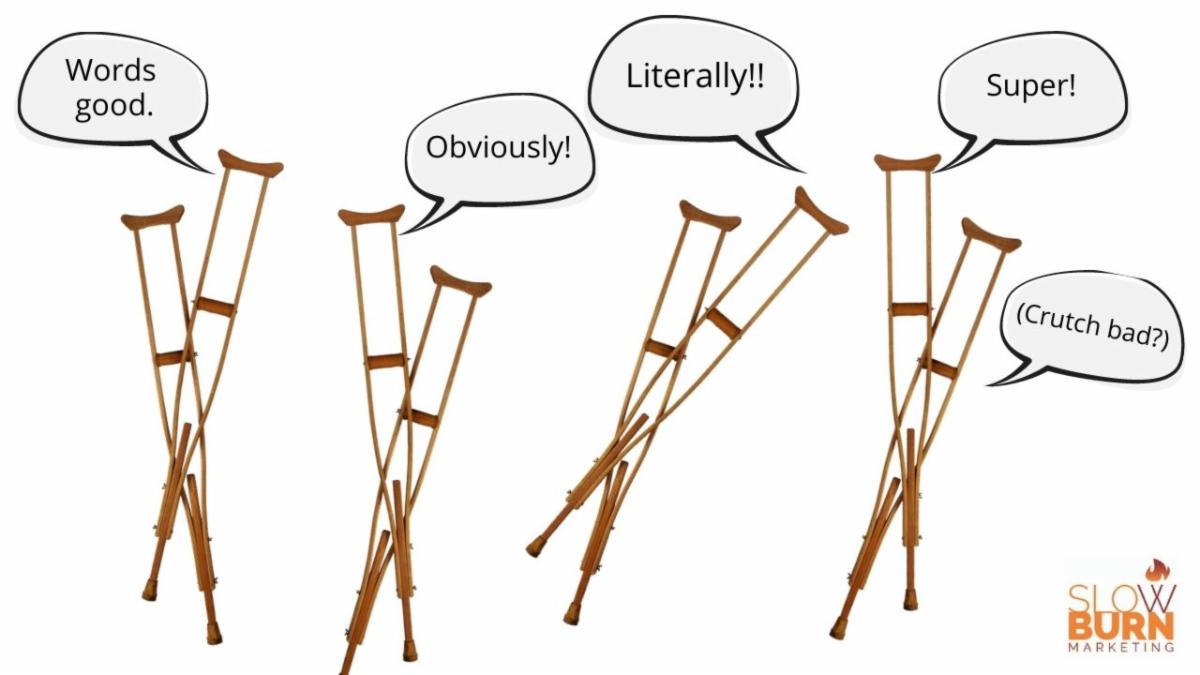
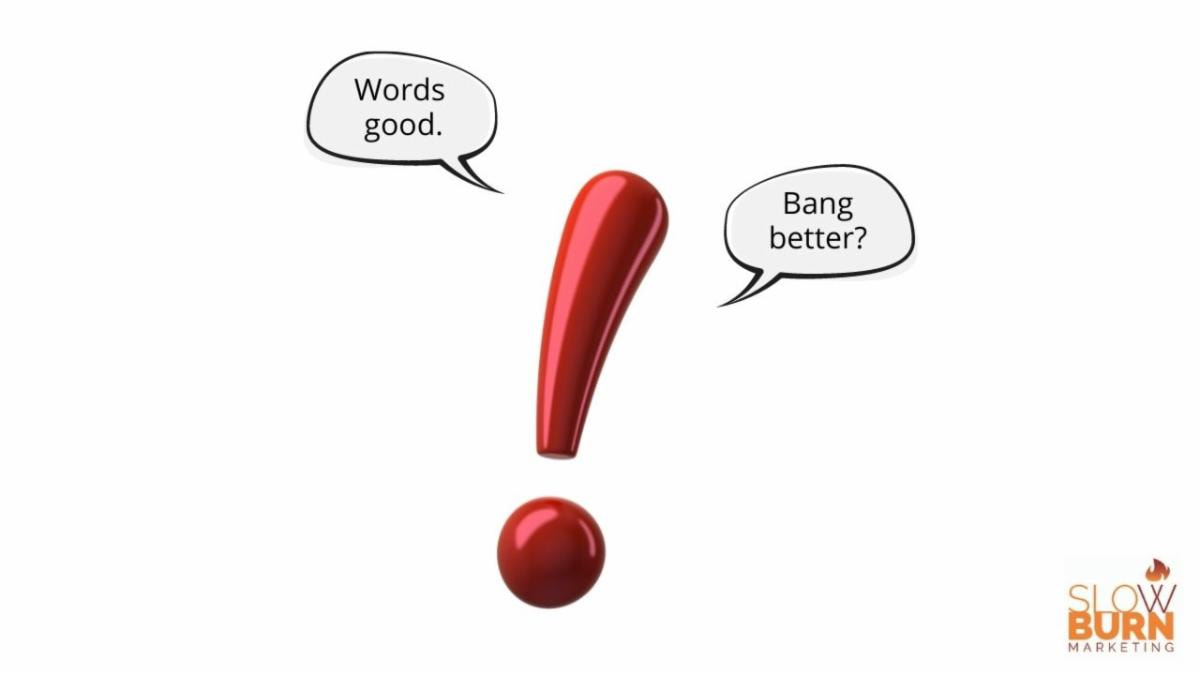
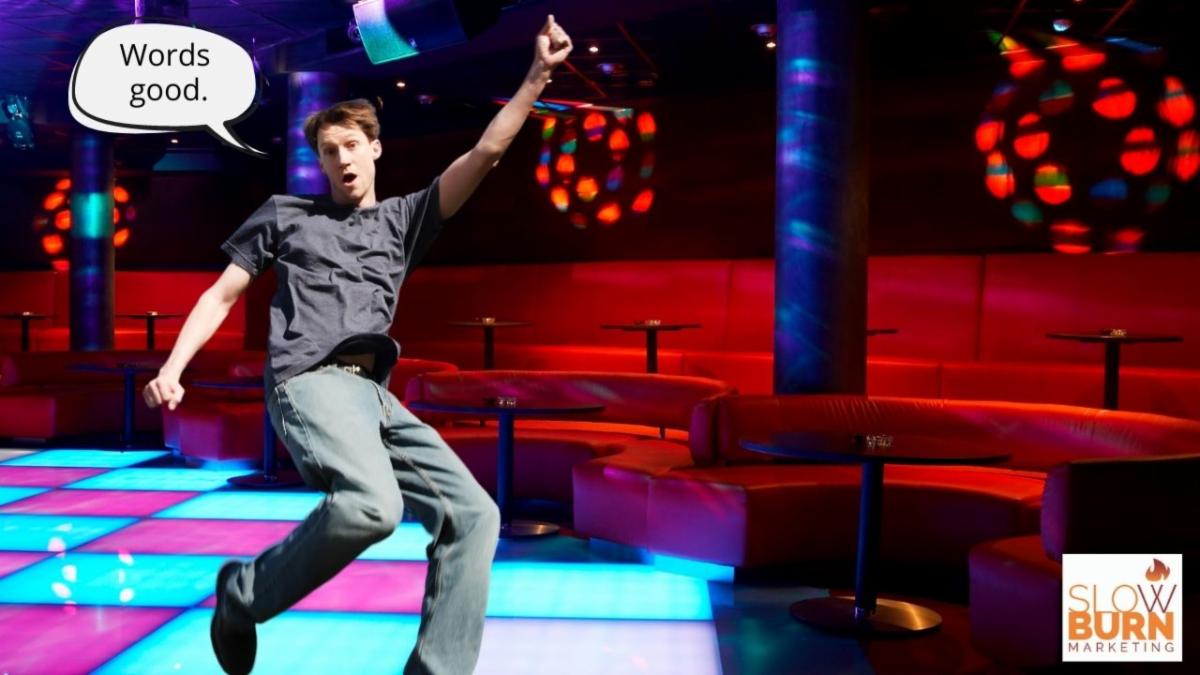
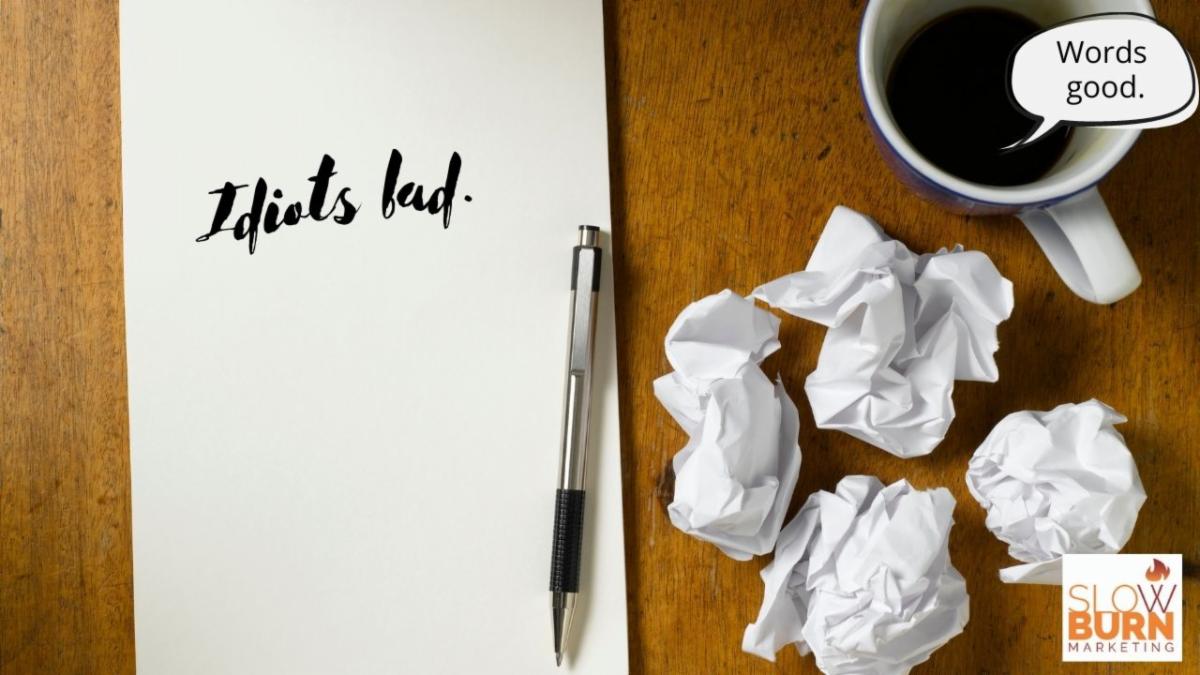
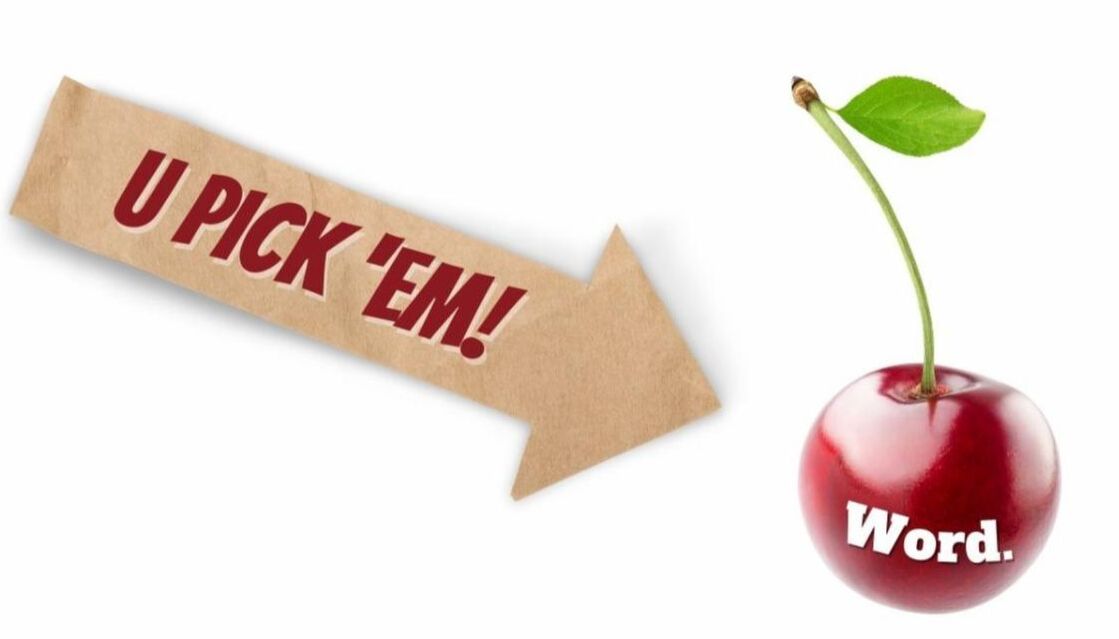
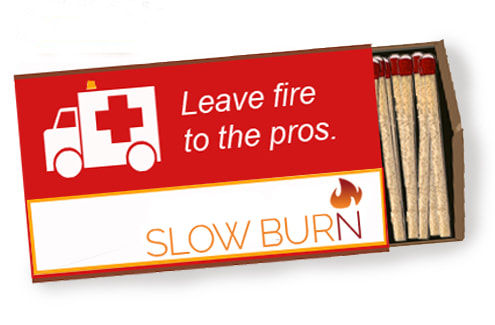
 RSS Feed
RSS Feed

